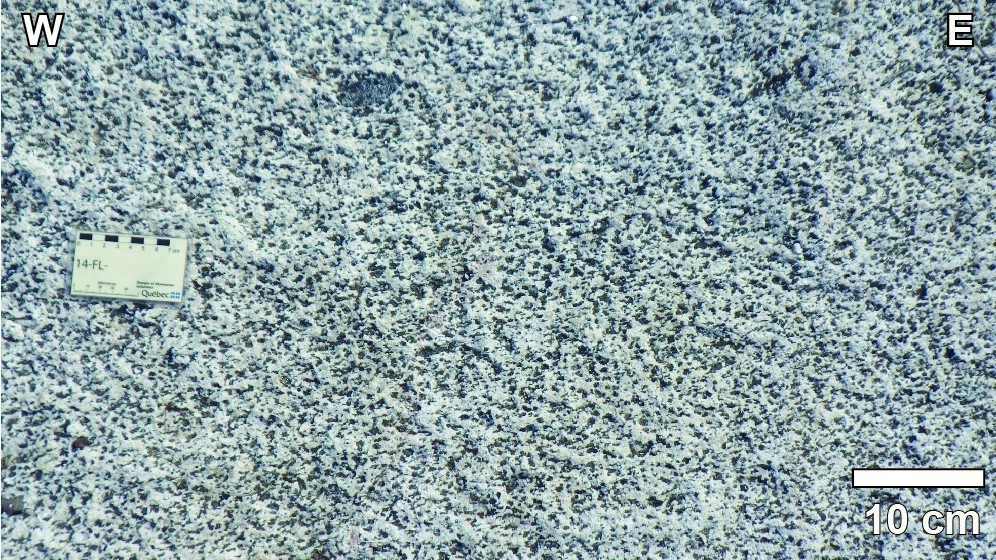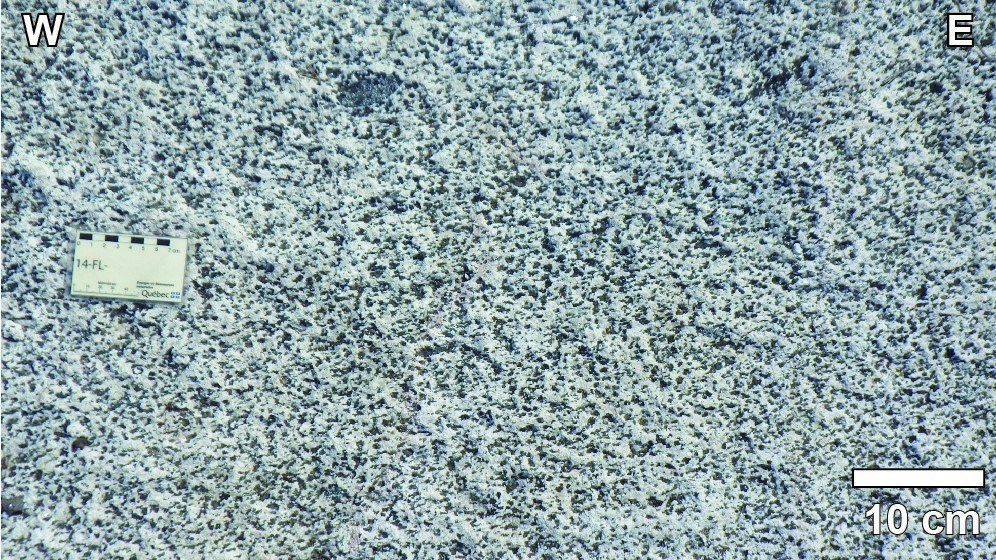
| Author(s): | Caty, 1975 |
| Age: | Neoarchean |
| Stratotype: | Reference outcrop 14-YD-5042 located on a logging road connecting on the Nord Road (UTM NAD83, zone 18: 553326 mE, 5561568 mN) |
| Type area: | Lake Waconichi area (NTS sheet 32J01) |
| Geological province: | Superior Province |
| Geological subdivision: | Opatica Subprovince |
| Lithology: | Quartz monzodiorite and tonalite |
| Category: | Lithodemic |
| Rank: | Lithodeme |
| Status: | Formal |
| Use: | Active |
None
Background
The intrusion was first described as the Barlow River Complex by Caty (1975) and Boudreault (1977), and later as the Barlow Pluton in subsequent publications (Racicot, 1979; Racicot et al., 1984).
Description
According to Racicot et al. (1984, p. 189): “The Barlow Pluton is composed of two series of rocks, an outer shell of quartz monzodiorite and a core of leucotonalite. The transition between the two is relatively abrupt, but with the mutual dyking relationship typical of coeval intrusions. Structurally, the mass is surrounded by a relatively narrow envelope with a mylonitic texture which fades out into a more typically igneous foliation in the interior of the batholith. Structures are dominantly E-W, parallel to the elongation of the batholith and the regional structural trend. The outer quartz monzodiorite shell is variable in composition, showing primary banding, shown by a variation in the content of mafic minerals, and a variety of early or synchronous mafic dykes which are deformed or partly digested by the principal phases. The principal mineral components are plagioclase, An24 (50-60%), quartz (10-15%), clinopyroxene and/or green hornblende (15%) with varying amounts of interstitial microcline (10-15%). The resulting rock is quite distinctive, and seems to occur only in masses in a similar structural position in the region. The leucotonalite core is a relatively monotonous rock, light grey, coarse-grained and composed of tabular crystals of plagioclase, An24 (55-60%), with amoeboid quartz grains (25-30%) and biotite (0-5%). Late aplite dykes cutting the main phases are granodioritic in composition.”
Thickness and Distribution
The Barlow Pluton is an ovoid intrusion. Its E-W-oriented long axis is parallel to regional foliation over a distance of ~39 km. The short axis is oriented N-S and measures ~8.5 km in length. The Barlow Pluton occupies the northern portion of NTS sheet 32J01 and northwestern portion of sheet 32I04.
Dating
| Sample Number | Isotopic System | Mineral | Crystallization Age (Ma) | (+) | (-) | Reference(s) |
| Barlow GC-10 | U-Pb | Zircon | 2697 | 3 | 3 | Gariépy and Allègre, 1985 |
Stratigraphic Relationship(s)
At its southern edge, the Barlow Pluton cuts mafic volcanic rocks of the Obatogamau Formation in the Abitibi Subprovince. At its northern limit, it cuts gneiss, tonalite, mafic gneiss, garnet amphibolite and pegmatite which characterize the Opatica Subprovince. In the southeast, Paleoproterozoic sedimentary rocks of the Chibougamau Formation unconformably lie on the pluton.
Paleontology
Does not apply.


